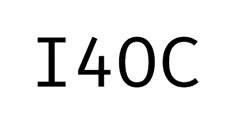Communication in nuclear families with adolescent children
Keywords:
Family-nuclear, Communication, Family-system, Adolescence, Family-interactionAbstract
The family is the system that teaches through communication, forming relationship patterns that the members are practicing in other contexts. The objective of this research was to characterize communication in nuclear families with adolescent children, as a binding entity within the family system. This study was descriptive observational with a qualitative approach. 10 nuclear families with adolescent children between 13 and 17 years old participated, selected with incidental non probalistic sampling. Data were collected through circular interviews, focus group topic guide and the application of the Family Communication Scale. The results that the families have manage alternative communication styles and indirect masked typology; It is determined that being clear and direct is not enough for communication to be functional. Furthermore, if the communicational exchange is devoid of affection, the silencing strategies will be part of the communicational circuit. Analyzing that the understanding of family interaction is significant to the communicational category and that, in addition, family communication, it is not possible to explain from a univocal perspective but from the complexity and as part of the interactional reality of a system.
References
Ackerman, R. A., Carson, K. J., Corretti, C. A., Ehrenreich, S. E., Meter, D. J., & Underwood,
M. K. (2019). Experiences with warmth in middle childhood predict features of text- message communication in early adolescence. Developmental psychology, 55(2), 351.
Alfonso Hernández, C., Valladares González, A., Rodríguez San Pedro, L., & Selín Ganén, M. (2017). Comunicación, cohesión y satisfacción familiar en adolescentes de la enseñanza secundaria y preuniversitaria. Cienfuegos 2014. Medisur, 15(3), 341-349.
Alhussain, K., Shah, D., Thornton, JD & Kelly, KM. (2019). Uso indebido de opioides familiares y cohesión familiar: impacto en la comunicación familiar y el bienestar. Trastornos adictivos y su tratamiento , 18 (4), 194-204.
Bordalba, M. M., & Bochaca, J. G. (2019). Digital media for family-school communication?
Parents' and teachers' beliefs. Computers & Education, 132, 44-62.
Carver, H., Elliott, L., Kennedy, C., & Hanley, J. (2017). Parent–child connectedness and communication in relation to alcohol, tobacco and drug use in adolescence: An integrative review of the literature. Drugs: education, prevention and policy, 24(2), 119-133.
Curtis, J. R., Treece, P. D., Nielsen, E. L., Gold, J., Ciechanowski, P. S., Shannon, S. E., & Engelberg, R. A. (2016). Randomized trial of communication facilitators to reduce family distress and intensity of end-of-life care. American journal of respiratory and critical care medicine, 193(2), 154-162.
Epstein, J. L., Sanders, M. G., Sheldon, S. B., Simon, B. S., Salinas, K. C., Jansorn, N. R., ... & Hutchins, D. J. (2018). School, family, and community partnerships: Your handbook for action. Editorial. Corwin Press.
Flannery, J., Callaghan, B., Sharpton, T., Fisher, P., & Pfeifer, J. (2019). Is adolescence the missing developmental link in Microbiome–Gut–Brain axis communication? Developmental psychobiology, 61(5), 783-795.
Hill, K. & Roberts, D. (2019). Parent–Adolescent Communication and Social Impacts on Black American Adolescents’ Academic Well-Being. Journal of Child and Family Studies, 28(11), 3207-3219.
Horstman, H. K., Schrodt, P., Warner, B., Koerner, A., Maliski, R., Hays, A., & Colaner, C. W. (2018). Expanding the conceptual and empirical boundaries of family communication patterns: The development and validation of an Expanded Conformity Orientation Scale. Communication Monographs, 85(2), 157-180.
Molleda, L., Estrada, Y., Lee, T. K., Poma, S., Terán, A. M. Q., Tamayo, C. C., & Prado, G. (2017). Short-term effects on family communication and adolescent conduct problems: Familias Unidas in Ecuador. Prevention Science, 18(7), 783-792.
Natale, K., & Lubniewski, K. (2018). Use of communication and technology among educational professionals and families. International Electronic Journal of Elementary Education, 10(3), 377-384.
Noller, P., & Bagi, S. (1985). Parent-adolescent communication. Journal of Adolescence, 8(2), 125-136
Rivadeneira, J., & López, M. A. (2017). Escala de Comunicación Familiar: validación en población adulta chilena. Acta Colombiana de Psicología, Vol. 20, no. 2 (jul.-dic. 2017); p. 116-126.
Scheunemann, L. P., Ernecoff, N. C., Buddadhumaruk, P., Carson, S. S., Hough, C. L., Curtis, J. R., & Arnold, R. M. (2019). Clinician-Family Communication About Patients’ Values and Preferences in Intensive Care Units. JAMA internal medicine, 179(5), 676-684.
Schrodt, P., & Shimkowski, J. R. (2017). Family communication patterns and perceptions of coparental communication. Communication Reports, 30(1), 39-50.
Sznitman, G. A., Zimmermann, G., & Van Petegem, S. (2019). Further insight into adolescent personal identity statuses: Differences based on self-esteem, family climate, and family communication. Journal of adolescence, 71, 99-109.
Wieckowski, A. T., & White, S. W. (2017). Application of technology to social communication impairment in childhood and adolescence. Neuroscience & Biobehavioral Reviews, 74, 98-114.
Wittenberg, E., Kravits, K., Goldsmith, J., Ferrell, B., & Fujinami, R. (2017). Validation of a model of family caregiver communication types and related caregiver outcomes. Palliative & supportive care, 15(1), 3-11.
Wittenberg, E., Kravits, K., Goldsmith, J., Ferrell, B., & Fujinami, R. (2017). Validation of a model of family caregiver communication types and related caregiver outcomes. Palliative & supportive care, 15(1), 3-11.
Downloads
Published
How to Cite
Issue
Section
License
Copyright (c) 2019 PsiqueMag

This work is licensed under a Creative Commons Attribution-NonCommercial-NoDerivatives 4.0 International License.
You are free to:
- Share — copy and redistribute the material in any medium or format
- The licensor cannot revoke these freedoms as long as you follow the license terms.
Under the following terms:
-
Attribution — You must give appropriate credit, provide a link to the license, and indicate if changes were made. You may do so in any reasonable manner, but not in any way that suggests the licensor endorses you or your use.












